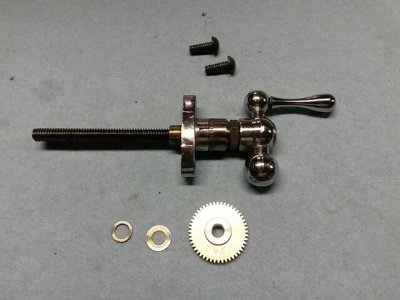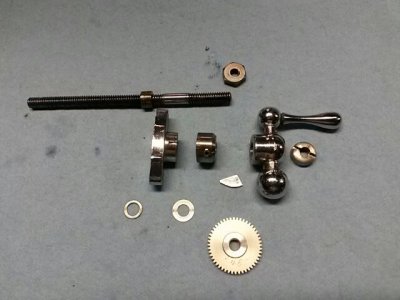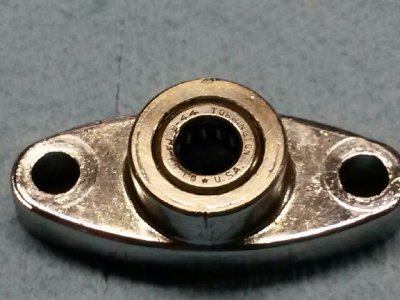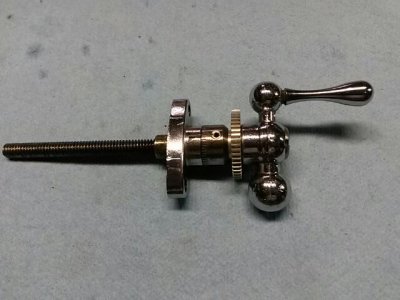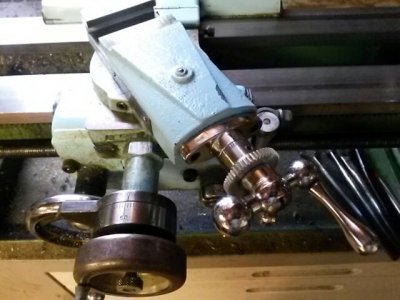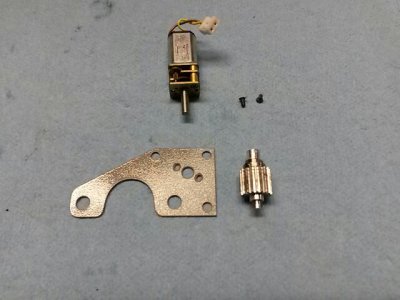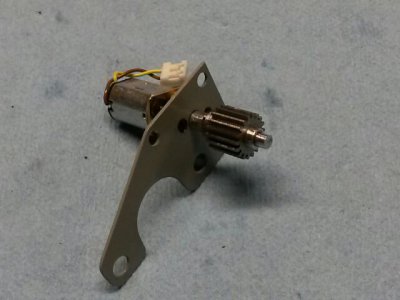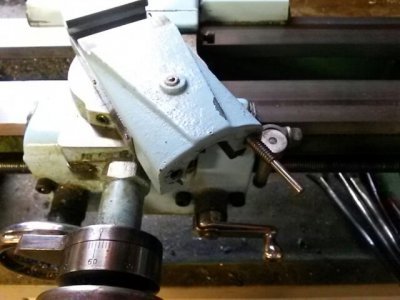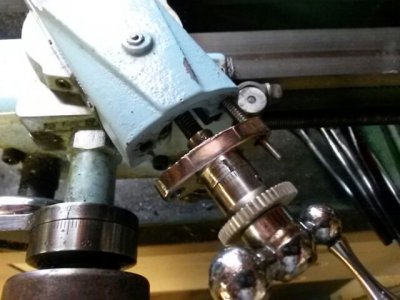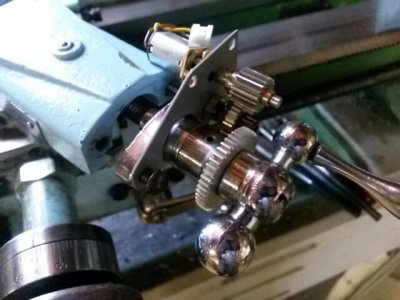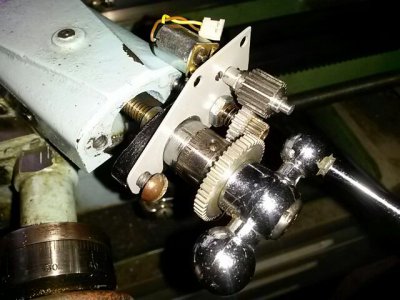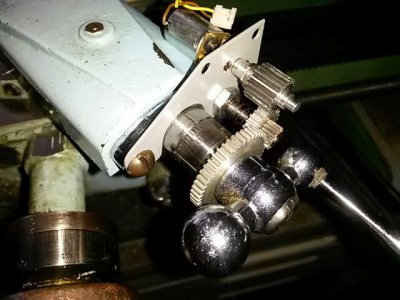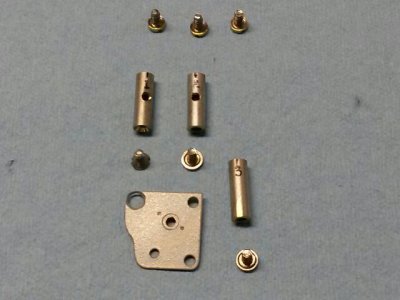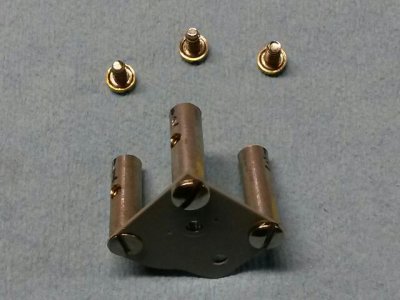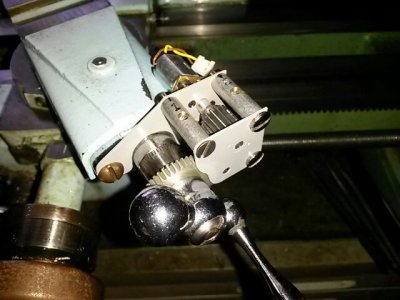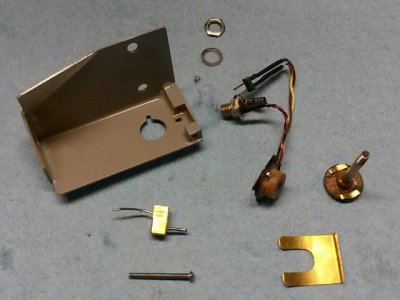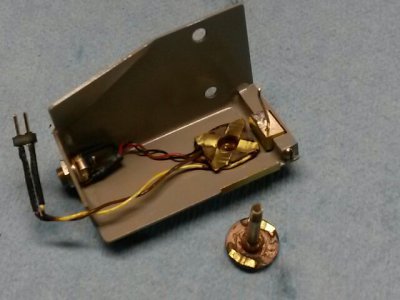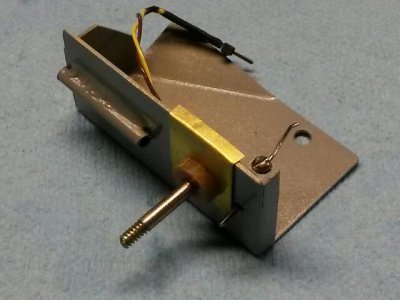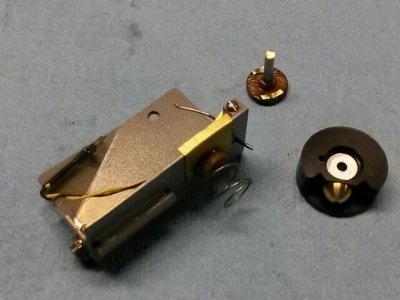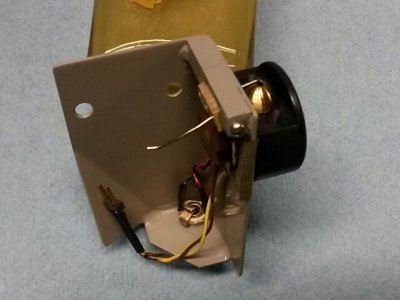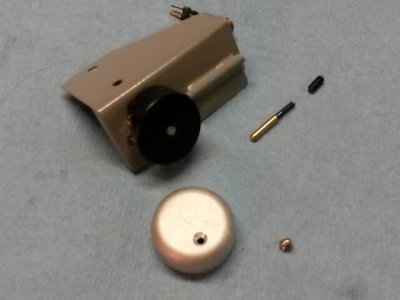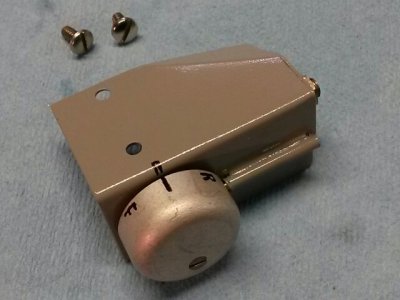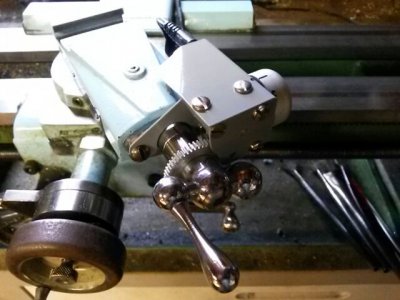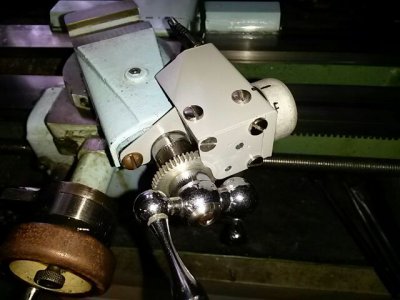- Joined
- May 20, 2014
- Messages
- 191
Power compound feed for Atlas/Craftsman 618 Lathe
Well, it's time for me to contribute something to this forum.
So, here's a powered compound project for my Atlas/Craftsman 618, Sears model 101.07301 lathe.
I wanted something very compact, that could be left in place without disturbing normal lathe operation. It needed to have forward and reverse, plus be disengaged when turned off. I also wanted the feed rate to be very slow, about 0.002" - 0.003" per revolution. Not really intending to do any cutting with it, just for precision feeding of a small toolpost grinder. I need to be able to make precise tapers. Slowly feeding the compound by hand is tedious, and introduces position errors because of the influence of hand feed pressures.
For me, these kinds of projects tend to hit stumbling blocks. This one started out semi-planned, with wiggle room to back up and rethink things.
What is presented here is the cleaned-up finished/workable version, without the goofy foul-ups and reworks that add color to our language.
With the exception of the hobby gearmotor and screws, just about every part is hand carved or dug out of boxes of ancient collections. As such, I don't expect this to be easily copied. But it is offered as an example of what could be done, and I hope others can find some useful ideas here.
Here's a typical Atlas/Craftsman compound. The feed handle is a modified, slightly larger cross-feed handle.
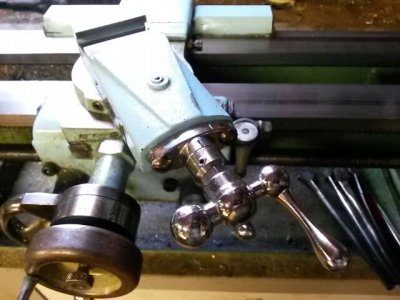
Here's all the parts to convert the compound feed to a powered compound feed.
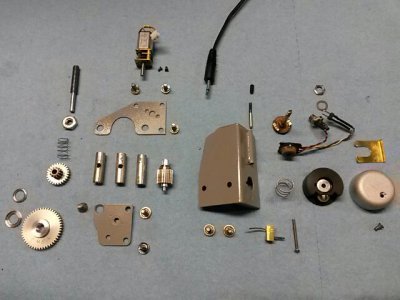
The hobby gearmotor is a cheap eBay item. It turns about 100 rpm, which I wanted to slow down to about 20 rpm, about 1 inch per minute feed rate.


Well, it's time for me to contribute something to this forum.
So, here's a powered compound project for my Atlas/Craftsman 618, Sears model 101.07301 lathe.
I wanted something very compact, that could be left in place without disturbing normal lathe operation. It needed to have forward and reverse, plus be disengaged when turned off. I also wanted the feed rate to be very slow, about 0.002" - 0.003" per revolution. Not really intending to do any cutting with it, just for precision feeding of a small toolpost grinder. I need to be able to make precise tapers. Slowly feeding the compound by hand is tedious, and introduces position errors because of the influence of hand feed pressures.
For me, these kinds of projects tend to hit stumbling blocks. This one started out semi-planned, with wiggle room to back up and rethink things.
What is presented here is the cleaned-up finished/workable version, without the goofy foul-ups and reworks that add color to our language.
With the exception of the hobby gearmotor and screws, just about every part is hand carved or dug out of boxes of ancient collections. As such, I don't expect this to be easily copied. But it is offered as an example of what could be done, and I hope others can find some useful ideas here.
Here's a typical Atlas/Craftsman compound. The feed handle is a modified, slightly larger cross-feed handle.

Here's all the parts to convert the compound feed to a powered compound feed.

The hobby gearmotor is a cheap eBay item. It turns about 100 rpm, which I wanted to slow down to about 20 rpm, about 1 inch per minute feed rate.


Last edited:


